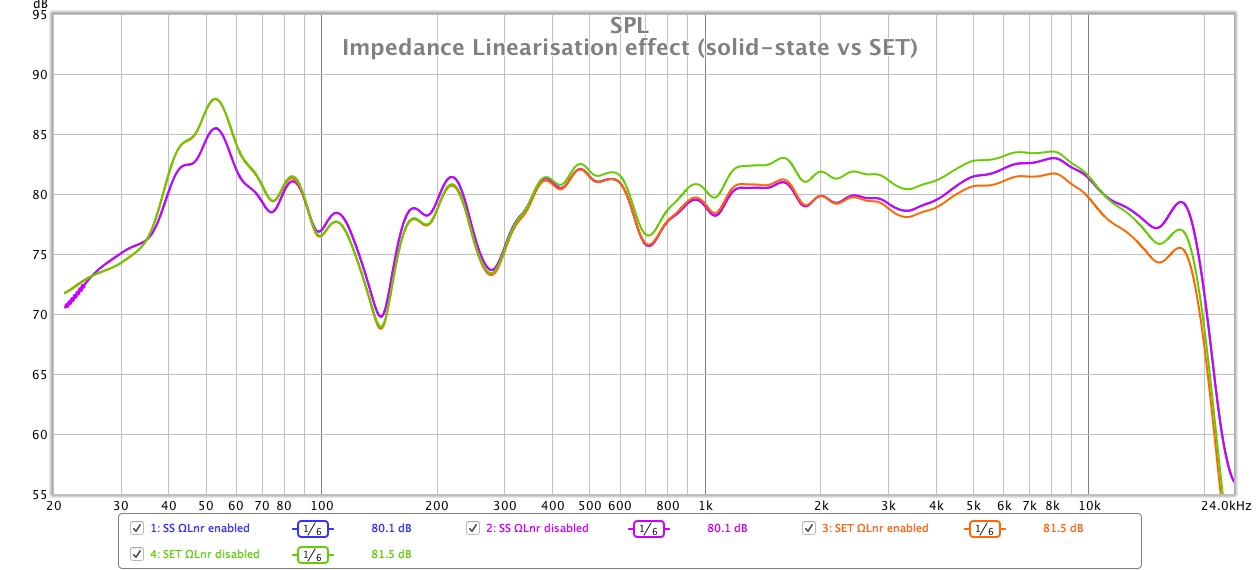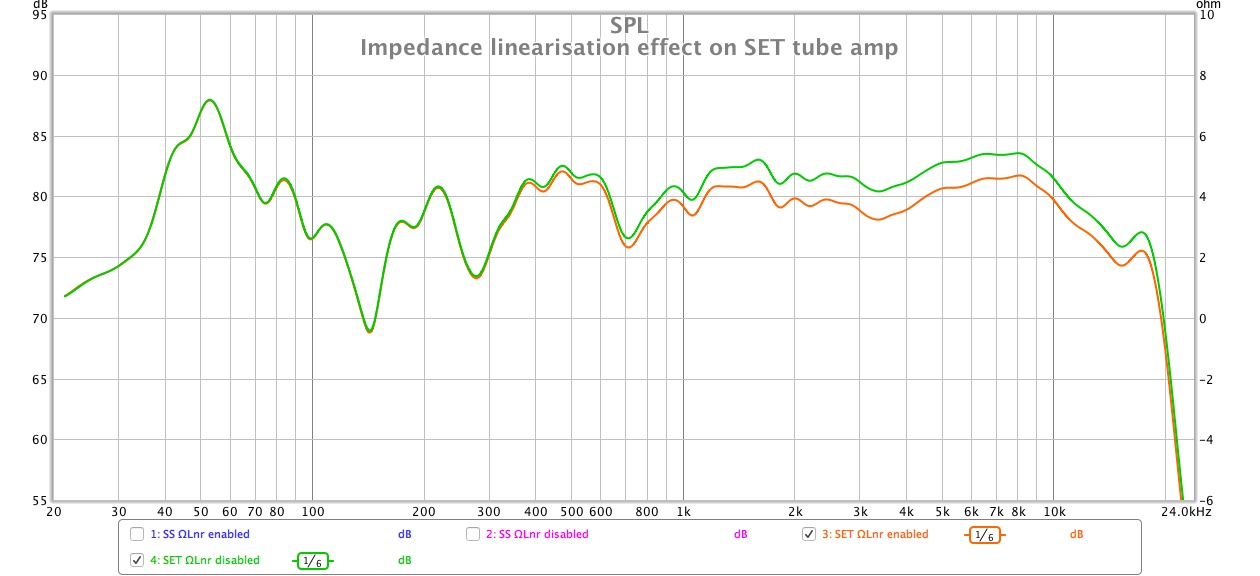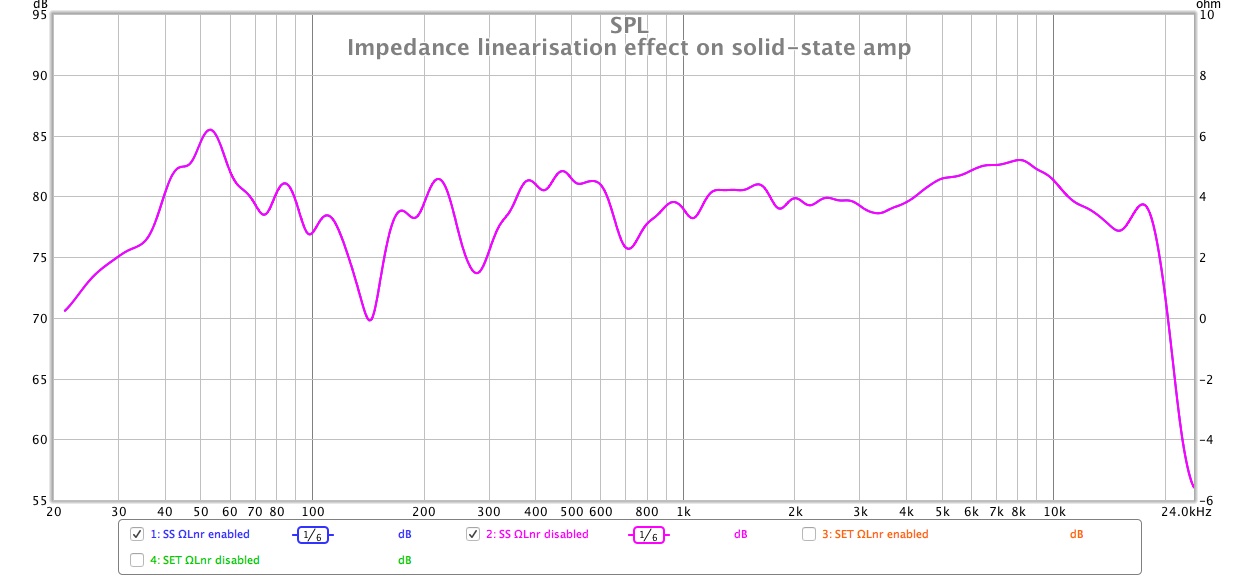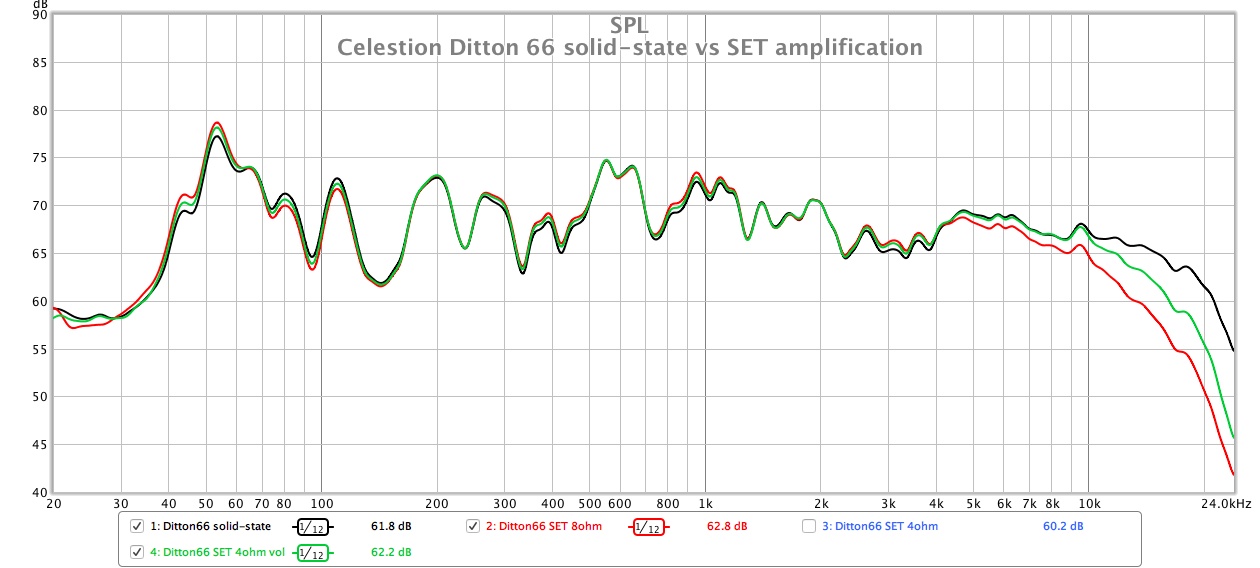ToTo Man
the band not the dog
I’ve been auditioning a pair of Blumenhofer speakers. They are described as ‘valve amp friendly' and present an 8Ω load by means of an ‘impedance linearisation circuit'. This circuit is activated when a two-pronged banana plug is inserted into a special socket on the back of the speaker and deactivated when it is removed.
Details on the impedance linearisation circuit are provided here and here.
When I drive the speakers with a solid state amp, there is no difference in performance (in frequency response terms at least) whether the impedance linearisation circuit is engaged or not. However, when I drive the speakers with an SET valve amp, the tweeter output level is shelved up by +2dB when the impedance linearisation circuit is NOT engaged.
The information provided in the links above suggest that the linearisation is applied around the LF/HF crossover frequency, but this must be a generalisation that isn’t specific to the speaker model I’m auditioning because the effect I’m seeing is occurring almost across the tweeter’s entire operating range, not just the 1.2kHz crossover frequency.
Based on the above info, is it reasonable to predict that similar FR behaviour will be observed when these speakers are driven by other valve amp designs, or is it more likely that the effect I’m observing is unique to SETs?
I’d also love for someone to explain how the flattening of the speaker's impedance curve is achieved by the speaker's linearisation circuit but I suspect the answer won’t fit on the back of a postcard!

Details on the impedance linearisation circuit are provided here and here.
When I drive the speakers with a solid state amp, there is no difference in performance (in frequency response terms at least) whether the impedance linearisation circuit is engaged or not. However, when I drive the speakers with an SET valve amp, the tweeter output level is shelved up by +2dB when the impedance linearisation circuit is NOT engaged.
The information provided in the links above suggest that the linearisation is applied around the LF/HF crossover frequency, but this must be a generalisation that isn’t specific to the speaker model I’m auditioning because the effect I’m seeing is occurring almost across the tweeter’s entire operating range, not just the 1.2kHz crossover frequency.
Based on the above info, is it reasonable to predict that similar FR behaviour will be observed when these speakers are driven by other valve amp designs, or is it more likely that the effect I’m observing is unique to SETs?
I’d also love for someone to explain how the flattening of the speaker's impedance curve is achieved by the speaker's linearisation circuit but I suspect the answer won’t fit on the back of a postcard!

Last edited:





